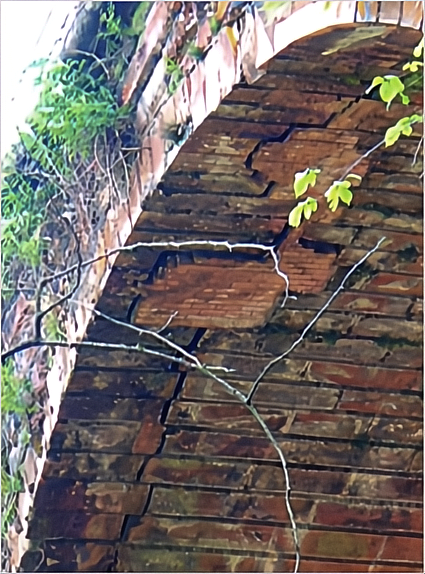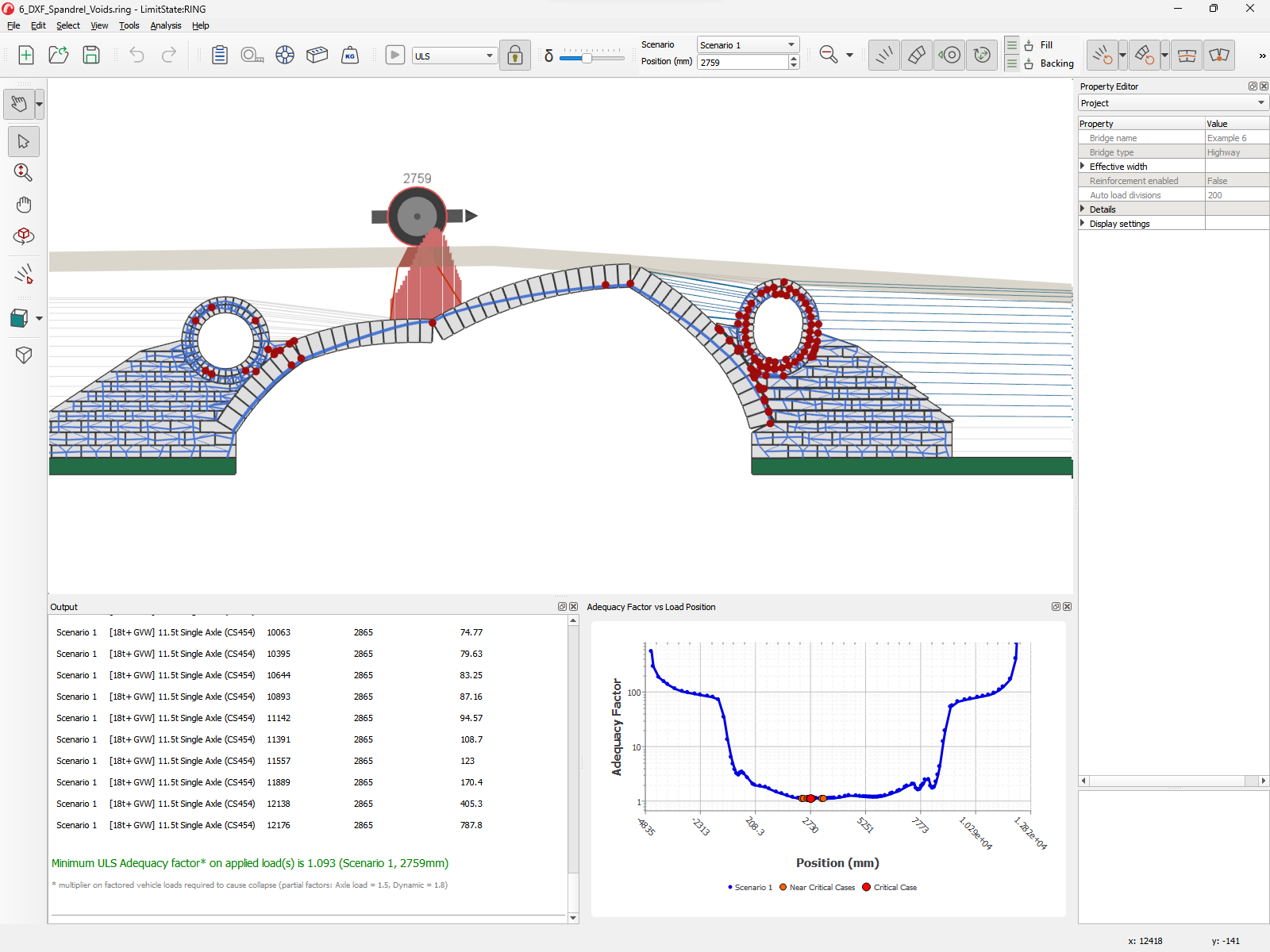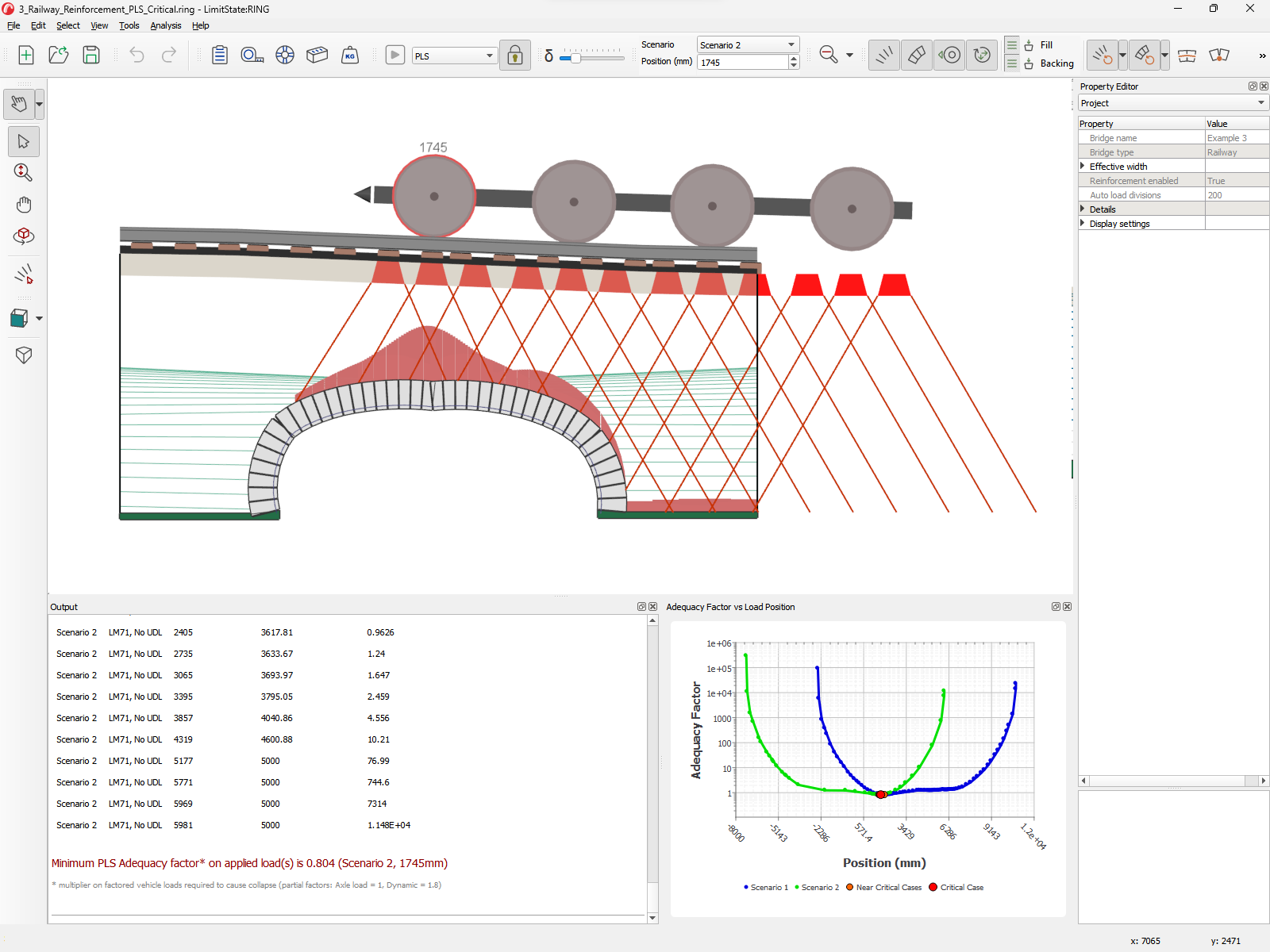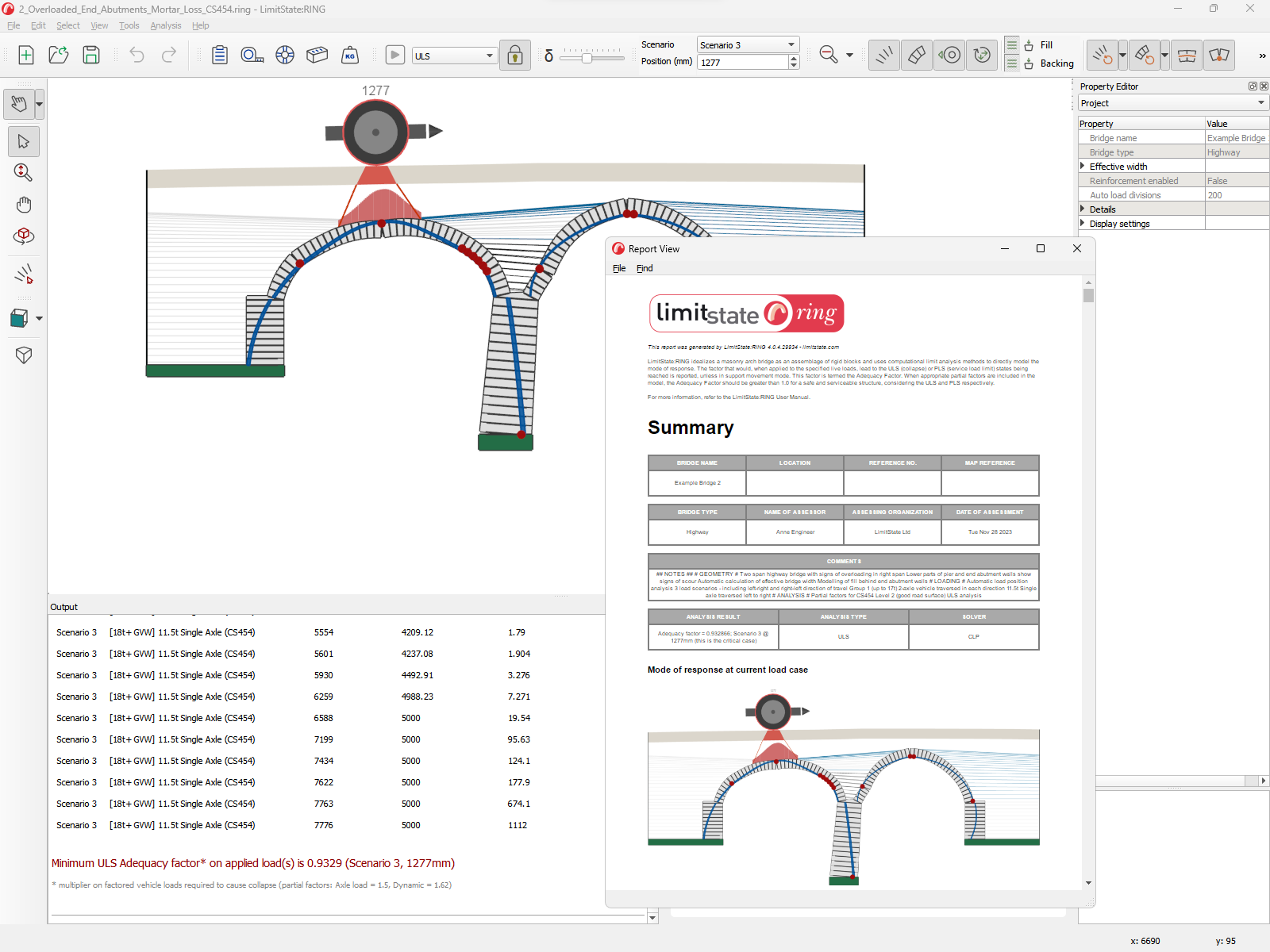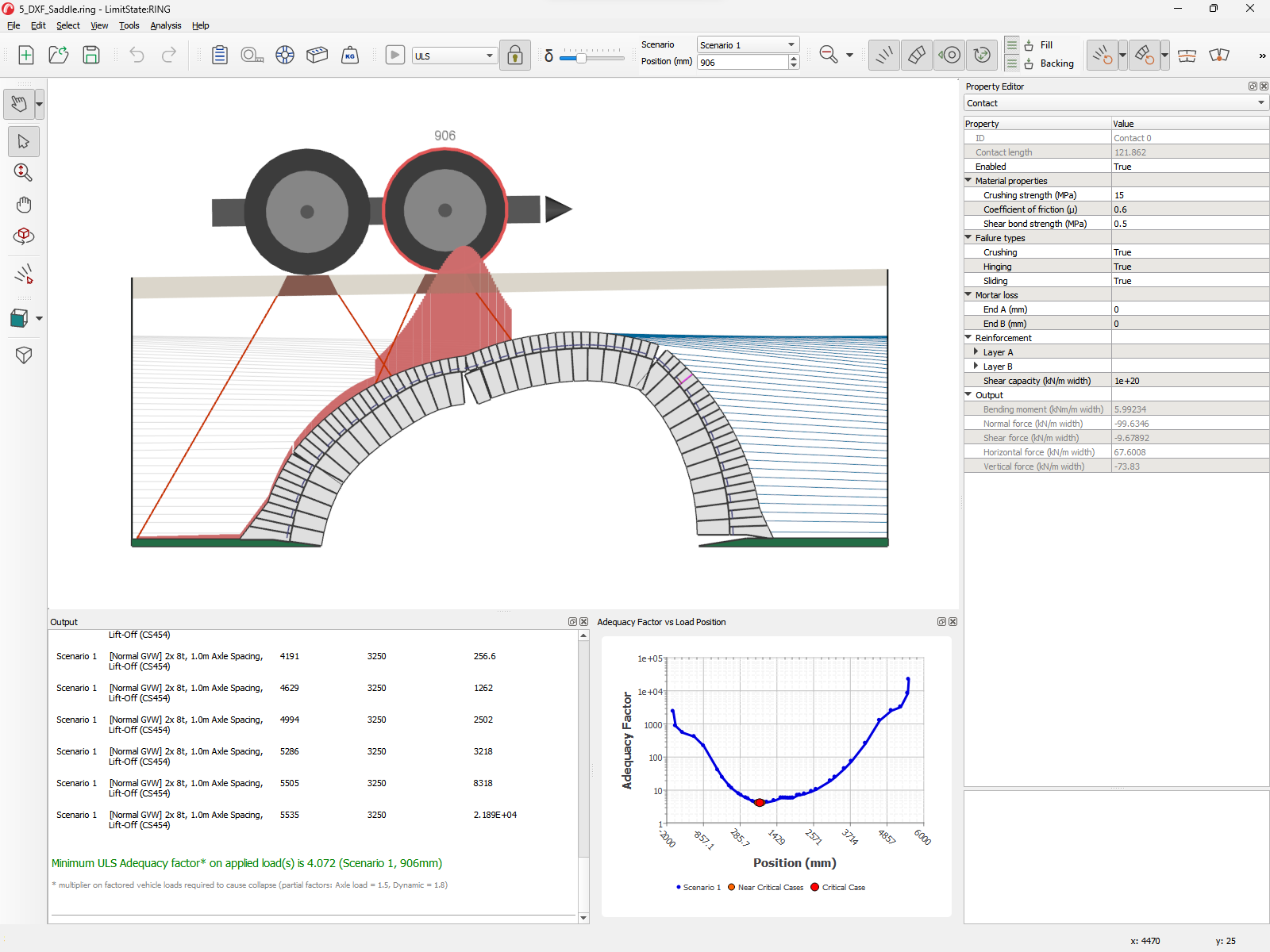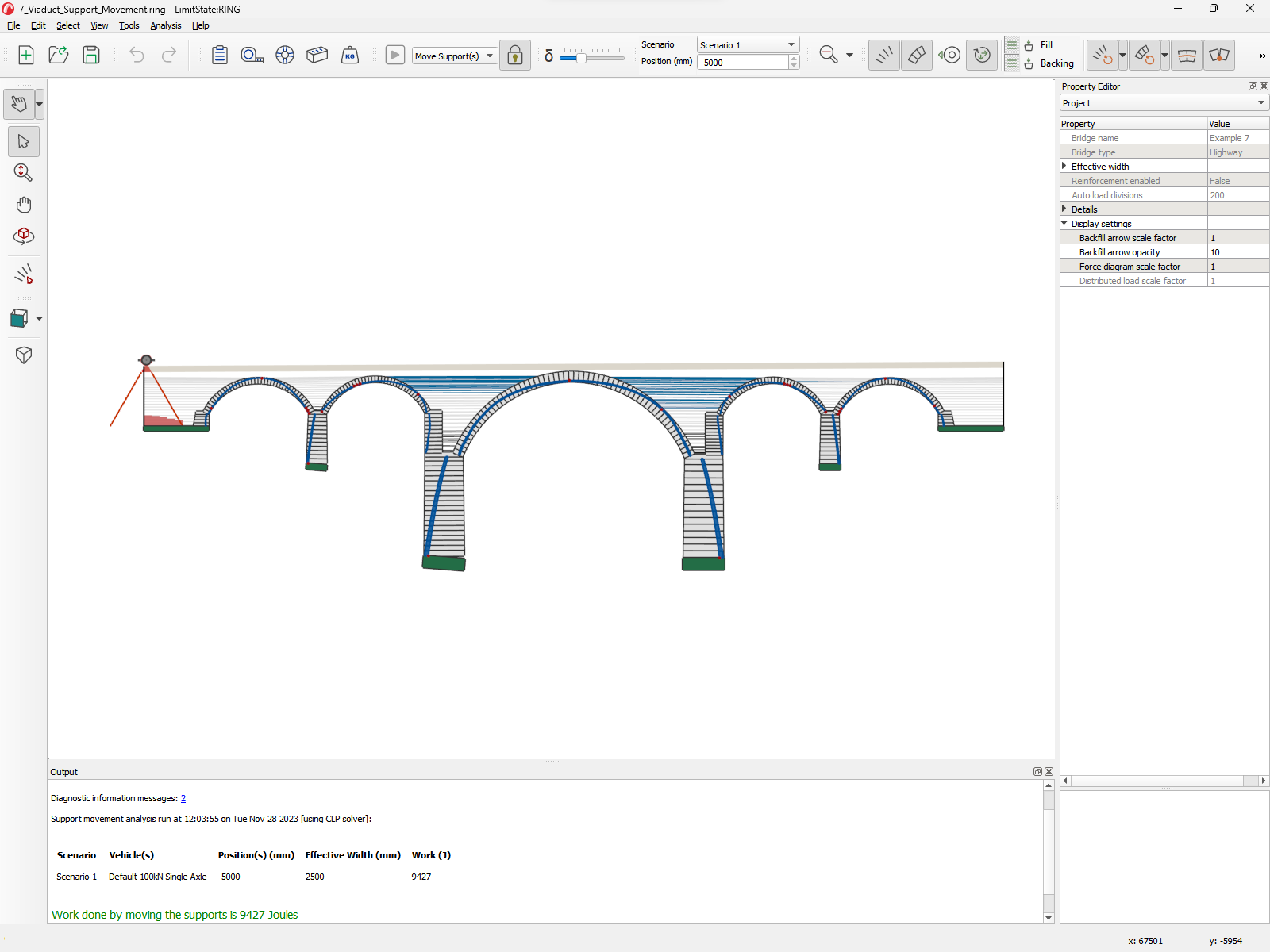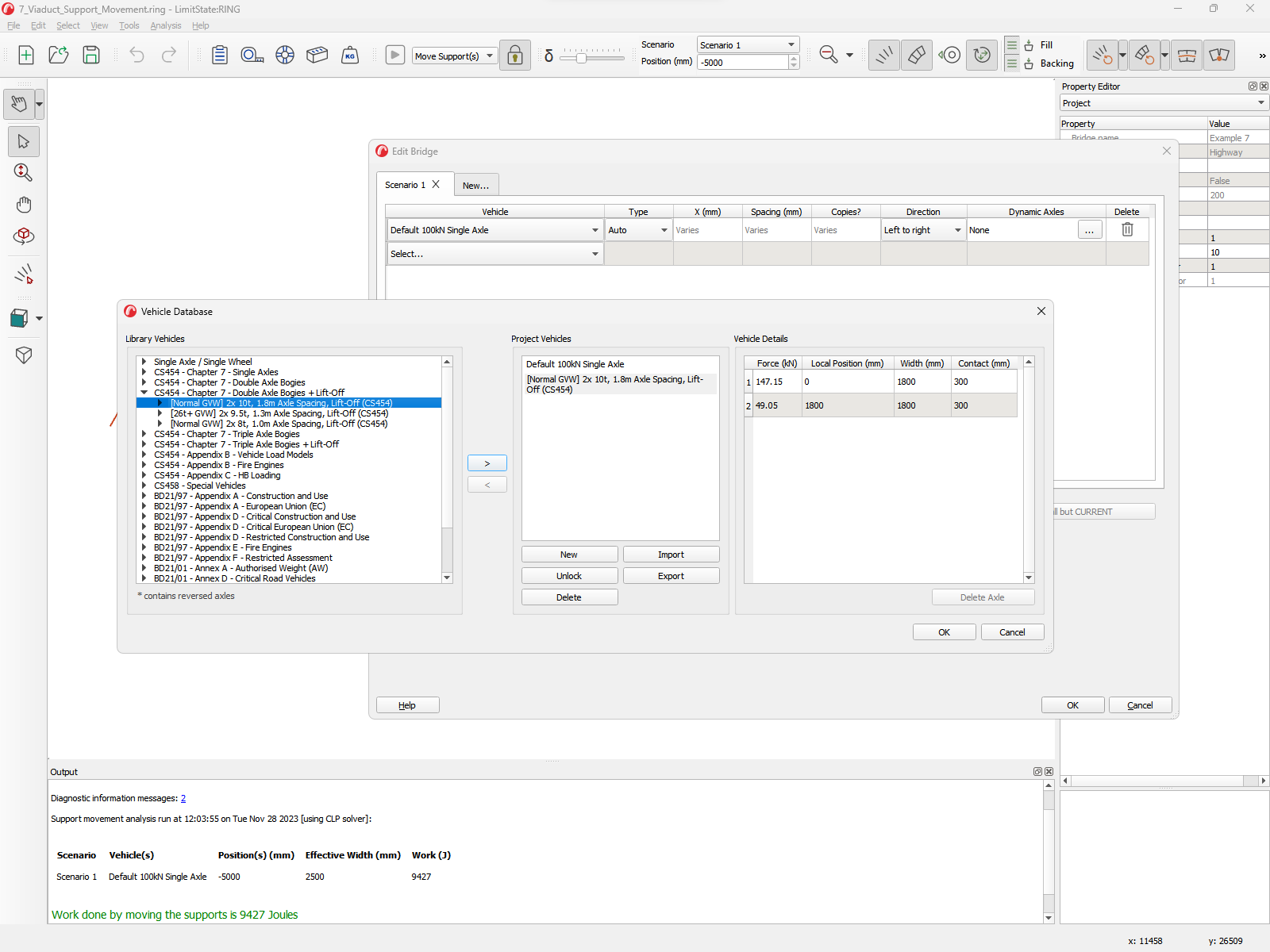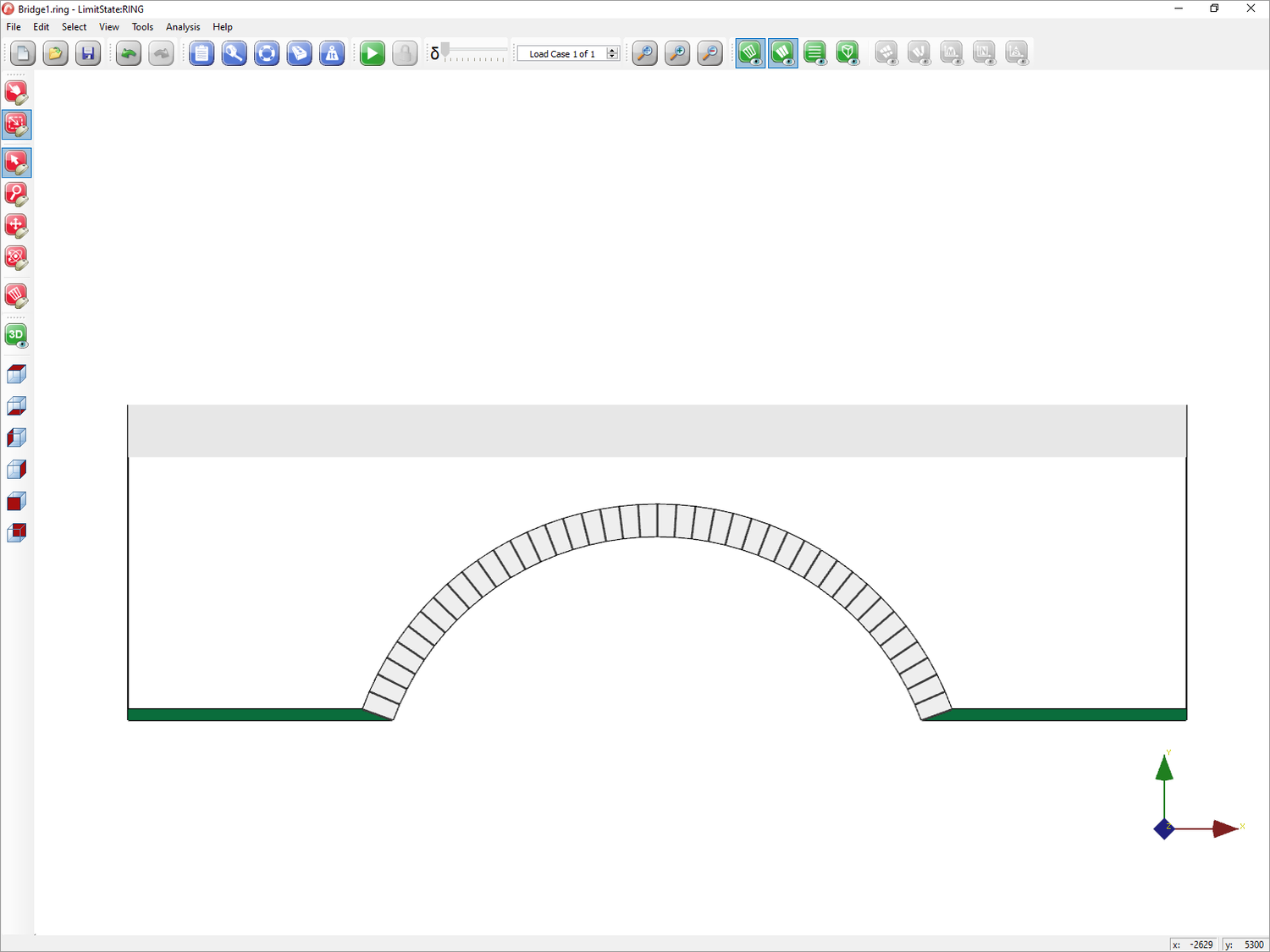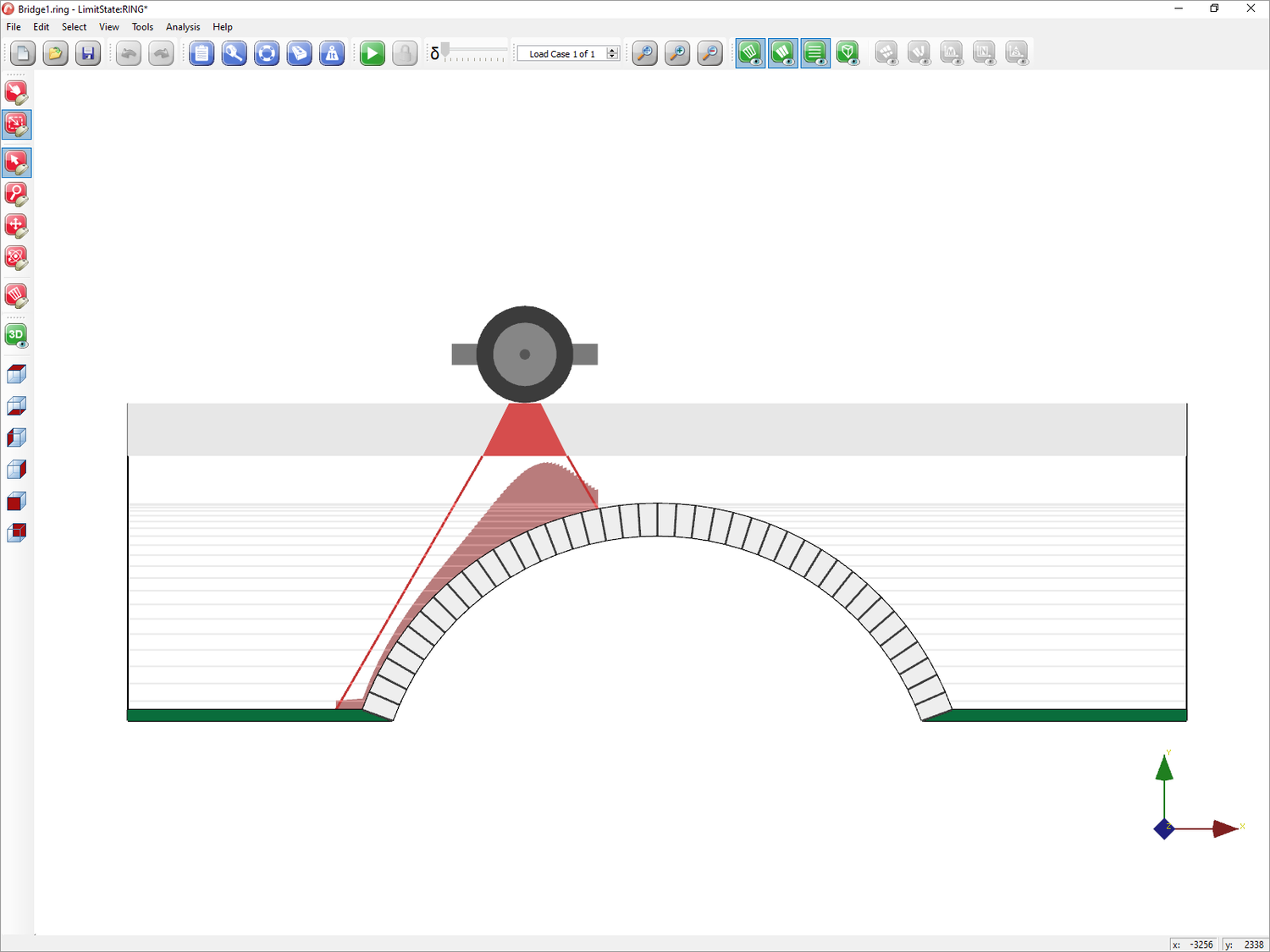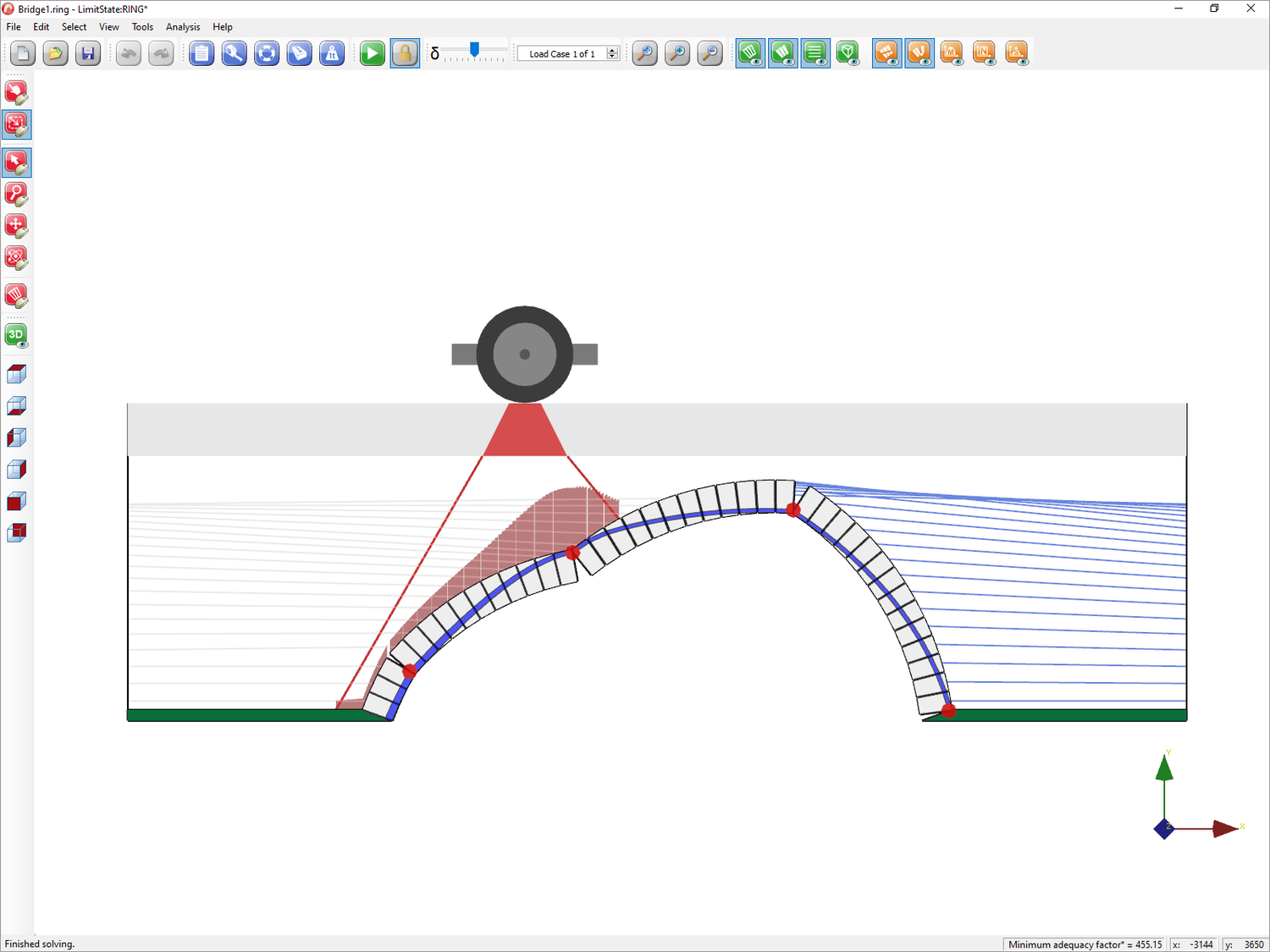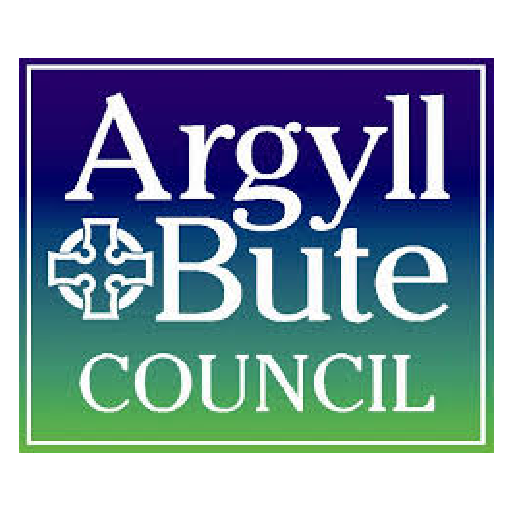LimitState:RING
Industry leading masonry arch bridge analysis software
Trusted by major consulting engineers, bridge owners and universities across the world, LimitState:RING is the industry-leading software application for rapid masonry arch analysis, capable of modelling a wide range of potential failure modes in both single and multispan structures.
Version 4 combines the familiar LimitState:RING features and ease of use with a range of powerful new functions and enhancements.
Understand more
Interactively answer ‘what if’ questions to gain a clearer understanding of the influence of key parameters and see visualizations of modes of response - many of which are missed by conventional masonry arch bridge analysis tools.











